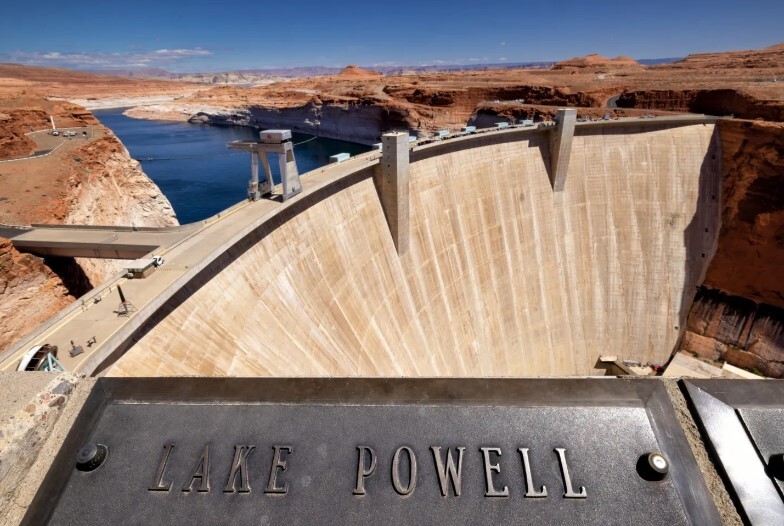
Lake Powell
As if on cue with the waning days of summer, Lake Powell watchers are wringing their hands again about declining water levels, while Lake Mead watchers have given up hope.
On August 10, 2022, Lake Powell sat at 3534.5, just north of 3490 the stated water level for making power at Glen Canyon Dam according to the US Bureau of Reclamation, and Lake Mead sat at 1041, 9 feet below the stated water level for making power at Hoover Dam according to the US Bureau of Reclamation.
In May 2022, after promising that spring runoff would save the day, the Bureau announced an emergency release of 500,000 acre-feet from Flaming Gorge Reservoir downstream to Lake Powell and reduced water releases from Lake Powell downstream to Glen Canyon Dam by 480,000 acre-feet. The one-two combo from the Bureau raised lake levels at Lake Powell enough to keep houseboaters from going postal all summer but forced Lake Mead into negative territory. All sources said the plan was insufficient at the time and only a temporary fix.
Talk has been raised in The Desert Sun News about a pipeline that will divert water from the Mississippi River to Lake Powell in an effort to prop up the failing western water system, however, no federal announcements have been put forth for any plan to address the failing water system in the American South West.
If Lake Powell fails to create electricity this fall, the average yearly cost increases would be $.08 per month for residential customers, $.59 per month for commercial customers, and $6.16 per month for industrial customers of Glen Canyon Dam electricity, according to a study done by The Glen Canyon Institute. The Glen Canyon Institute has advocated for abandoning the Glen Canyon Dam in favor of a free-running Colorado River.
Residents of Page, Arizona however and Members of the Navajo Nation that rely on water from Lake Powell for drinking water look to leaders who say they have plans b and c in place should the trend continue according to Bryan Hill, a representative of Page Utility Enterprise, the city’s power and water utility in an interview with NPR.
So it seems, that the billions of taxpayer dollars that were spent on the creation of Lake Powell, The Glen Canyon Dam, Lake Mead, and the Hoover Dam and their continued operation will all go to waste as there are no stated plans to remediate the effects of the 20-year drought and no one really needs the electric or water.
Thumbnail Credits: Circle of Blue
Sources







